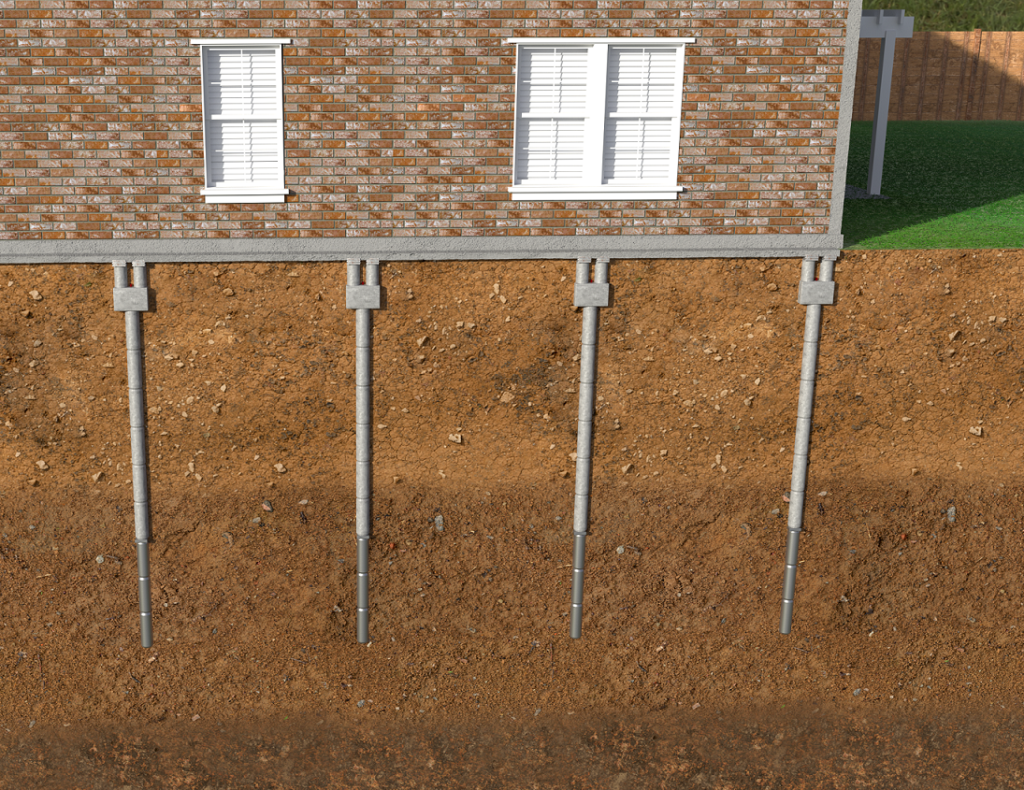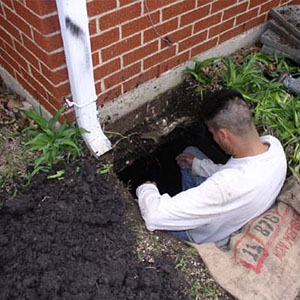Discover Reliable Providers for Foundation Repair Oklahoma: A Comprehensive Review
Discover Reliable Providers for Foundation Repair Oklahoma: A Comprehensive Review
Blog Article
Discovering Various Methods of Structure Repair Service for Numerous Soil Types
Foundation repair work is a critical element of keeping architectural integrity, particularly when thinking about the varied challenges presented by different soil types. The complexity of dirt behavior under varying conditions necessitates a tailored strategy to repair, guaranteeing optimum options such as helical piers for unsteady soils or chemical cements for natural layers. The concern remains: just how do we determine the most effective method for each one-of-a-kind circumstance? Comprehending the interplay in between dirt attributes and repair work strategies is vital, yet there is more to uncover in the mission for sustainable options. What factors genuinely determine the option of approach?
Understanding Soil Kinds
Dirt types play a critical role in the security and durability of structure foundations, making it vital for homeowners and construction experts to recognize their qualities and actions. The communication between dirt and structure can establish the structural integrity of a building. There are numerous dirt types, each with distinctive physical properties that influence exactly how foundations are created and kept.
Granular dirts, such as sand and gravel, provide excellent water drainage and are commonly thought about steady. They have high load-bearing capabilities, which can support larger structures. These dirts can move if not compacted properly, leading to possible settlement concerns. In comparison, cohesive dirts like silts and clays exhibit various behaviors. These dirts have a tendency to retain wetness, and their load-bearing capacity can differ substantially with changes in dampness content.
Rocky dirts, known for their stamina and security, deal superb support for structures however might call for customized tools for excavation. Alternatively, fertile dirts, which are a well balanced mix of sand, silt, and clay, usually offer positive problems for foundation assistance due to their moderate drain properties.

Recognizing these soil types is vital for picking suitable foundation repair techniques, making certain the resilience and security of structures gradually.
Obstacles With Extensive Clay
Among the numerous soil types, extensive clay offers unique obstacles for foundation stability due to its tendency to undergo significant volume adjustments with wetness variant. This kind of soil swells when wet and agreements when dry, which can put in significant stress on frameworks. These variations can lead to foundation splitting, heaving, and settlement concerns, posing substantial dangers to the structural stability of buildings.
The obstacles with extensive clay are intensified by its plasticity index, which gauges the soil's ability to change form and volume. A high plasticity index suggests higher possibility for movement, boosting the possibility of damage to structures. This is especially bothersome in areas experiencing constant or severe climate changes, where cycles of wet and completely dry conditions are typical.
Furthermore, the deepness of expansive clay layers can vary, complicating the evaluation and planning of suitable structure fixing methods. The unpredictable nature of its motion necessitates specialized design solutions to mitigate dangers. Furthermore, extensive clay can influence utility lines, pathways, and driveways, better complicating repair initiatives. These intricacies need a detailed geotechnical evaluation to make certain efficient structure repair work approaches are implemented, highlighting the importance of dealing with extensive clay obstacles with know-how and treatment.
Solutions for Sandy Soils
Sandy soils, identified by their big fragment size and low cohesion, existing distinct challenges for structure security as a result of their propensity for moving and erosion. These properties demand specialized foundation repair work methods to make certain Recommended Site architectural integrity. One reliable solution is using deep foundation systems such as helical piers or driven piles. By securing the structure to much deeper, much more secure soil layers, these systems can give the necessary support to counteract the moving nature of sandy dirts.
One more suggested method is the application of soil stablizing approaches. Chemical grouting, for instance, involves infusing a maintaining agent into the soil, which improves communication and minimizes leaks in the structure. This process aids to solidify the sandy substratum, therefore minimizing the risk of disintegration and motion.
Additionally, mounting appropriate drain systems is essential in sandy dirt problems. Making sure sufficient water drainage can stop water build-up around the structure, which commonly exacerbates disintegration and dirt displacement. Strategies such as French drains pipes or surface area grading can be utilized to direct water far from the building border.
Addressing Resolving in Loamy Soils
Loamy dirts, understood for their balanced mix of clay, sand, and silt, offer a productive base for lots of structures yet can in some cases bring about foundation settling as a result of their distinct composition. This well balanced texture offers superb drainage and nutrient retention, making it excellent for farming and landscape design. This same characteristic can become troublesome for structures, as changes in moisture web content can cause the soil to increase or view agreement, leading to clearing up.
Addressing working out in fertile soils calls for a multifaceted method. Exact dirt screening is critical to identify the particular structure and dampness web content of the loam. As soon as information is collected, applying proper drainage services is necessary to keep regular dampness levels, consequently lowering the threat of dirt tightening or growth. French drains or surface grading work approaches to redirect water away from the foundation.

Innovative Fixing Techniques
In the world of foundation fixing, ingenious strategies are continuously being developed to attend to the complex tests presented by various dirt problems. As dirt types differ dramatically in their architectural residential or commercial properties, typical techniques might not always are enough. The introduction of brand-new technologies in structure fixing offers extra customized services, making certain stability and durability.
One significant innovation is making use of helical piers, which are particularly efficient in unpredictable or expansive dirts (foundation repair oklahoma city ok). These piers are screwed right into the ground until they reach a stable layer of dirt, offering strong support for the structure over. This approach minimizes disruption and is adaptable to different dirt kinds, making it a functional remedy
Another cutting-edge technique is the application of polyurethane foam injection. This technique includes injecting high-density polyurethane foam underneath the structure to load voids and maintain the structure. It is a less intrusive choice to conventional base, offering quick installation with minimal disturbance to the surrounding area.
In addition, soil stabilization methods, such as the use of chemical grouts, have gained grip. These substances boost dirt stamina and decrease permeability, preventing future moving. Collectively, these innovative repair techniques give efficient services for the diverse obstacles presented by varying soil conditions.
Conclusion

Structure repair is a critical aspect of preserving architectural honesty, especially when thinking about the varied obstacles positioned by various dirt types (foundation repair Oklahoma). The complexity of soil habits under differing problems demands a customized strategy to fix, guaranteeing ideal services such as helical piers for unsteady soils or chemical grouts for cohesive layers. By anchoring the foundation to deeper, a lot more stable dirt layers, these systems can supply the necessary assistance to combat the shifting nature of sandy soils
Structure fixing requires cautious factor to consider of dirt kinds to guarantee stability and durability. Chemical grouts boost dirt strength and decrease permeability view publisher site in natural dirts.
Report this page